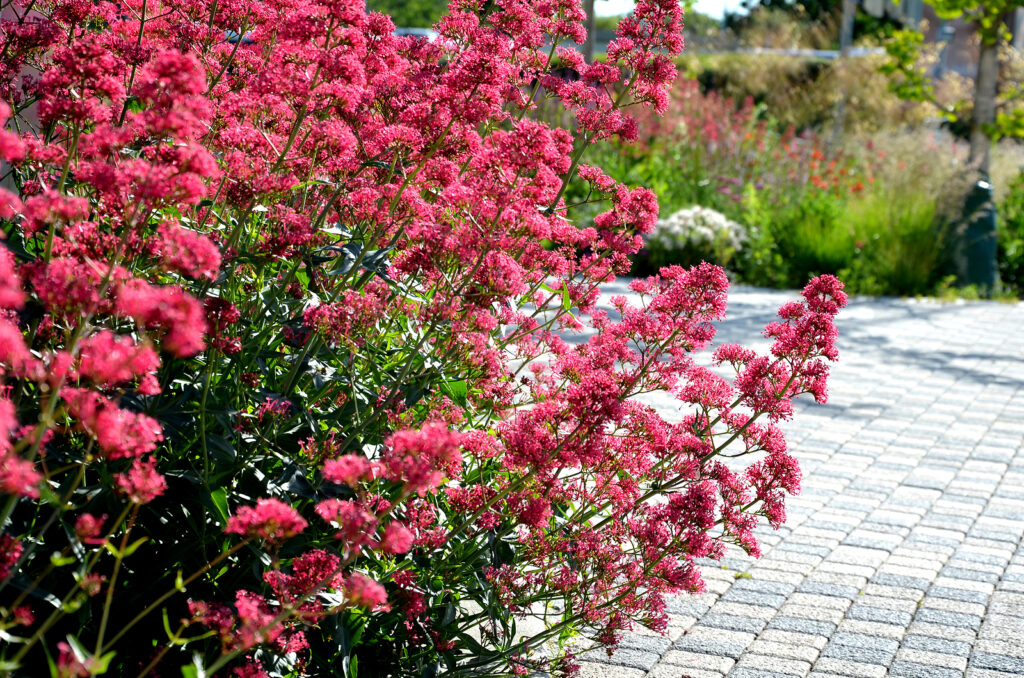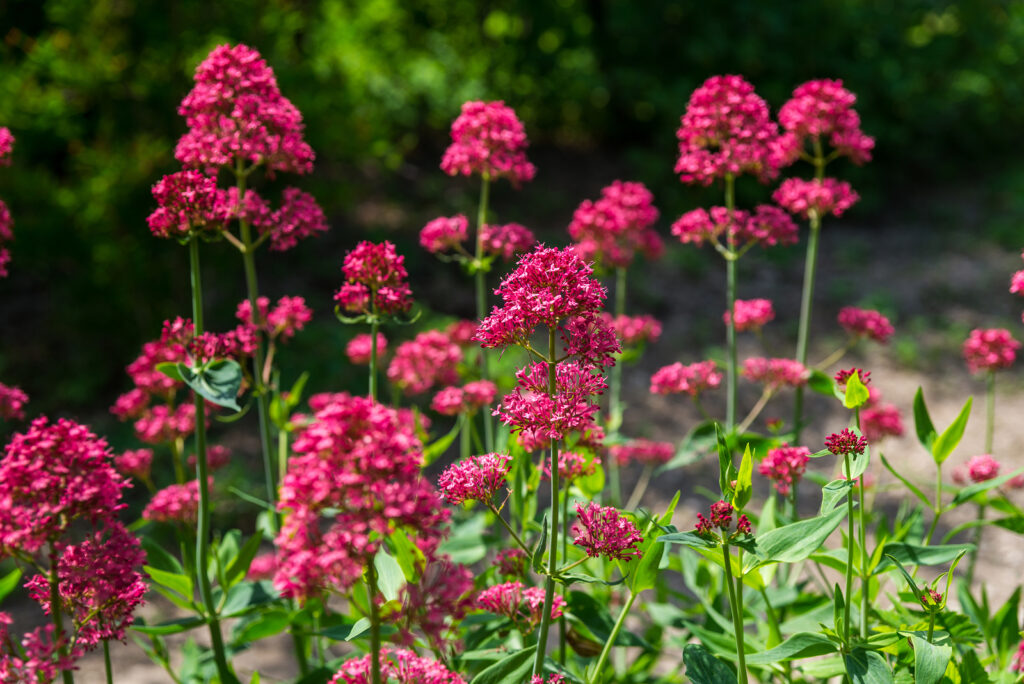Centranthus ruber — commonly called red valerian — is an upright perennial with white, pink, or red flowers. It is sometimes seen along roadsides but is a good fit for cottage gardens.
Centranthus forms bushy clumps with upright stems to 3 feet tall. Small, dusty crimson or rose-pink flowers appear in dense terminal clusters. Blooms are long-lasting.
Centranthus readily self sows; in some regions, it is considered a weed. Centranthus easily grows in poor dry soils and needs little care. The bloom time can be extended by cutting off old flowering stems.

Get to know Centranthus
- Plant type: Perennial, lives 3 to 5 years
- Growing Zones and range: 4-8; best in cool-summer area
- Hardiness: Hardy to -25°F/-32C°
- Height and width: 1 to 3 feet tall (30-90cm), 1 to 2 feet wide
- Foliage: Bushy clumps of stems to 3 feet high with pointed 4-inch grayish blue-green leaves
- Flowers: Small flowers on domed clusters.
- Flower colors: Red, pink, white
- Uses: Use in borders or cottage garden; attracts butterflies
- Bloom time: Spring through early summer
- Common name: Red Valerian, Jupiter’s beard
- Botanical name: Centhranthus ruber
- Family: Valerianaceae
- Origin: Southern Europe, the Mediterranean, Northwest Africa
Where to plant Centranthus
- Plant Centranthus in full sun.
- Centranthus will grow in poor, average, and alkaline soil with good drainage. It does not do well in soil that is too rich.
Centranthus uses and companions
- Plant Centranthus in cottage gardens and rock gardens or in a border.
- Good garden companions for Centranthus include Aster frikartii, Chrysanthemum superbum, Hemerocallis, bearded Iris, Nepeta.
- Centranthus may be difficult to match with most pinks and reds; it is best with blue, white, and yellow.

When to plant Centranthus
- Set Centranthus outdoors in spring after the last frost has passed.
- Sow seed in spring or early summer in evenly prepared soil.
Planting and spacing
- Space Centranthus 1 to 2 feet apart.
- Seed readily self-sows; sow seed 1/8 inch deep in evenly prepared soil.
How to water and feed Centranthus
- Keep the soil evenly moist; do not let it dry out especially when plants are young. Centranthus is drought tolerant once established.
- Centranthus does not need to be fertilized.
Centranthus care
- Mulch Centranthus with organic planting mix to conserve soil moisture.
- Trim away spent blooms. Red valerian will self-seed if blooms are left to drop.
- Plants may become floppy after blooming; shear them back to promote compact growth.
- Centranthus has no serious pests or diseases.

Centranthus propagation
- Centranthus can self-sow prolifically.
- Centrathus seeds germinate in 21 to 30 days at 65° to 70°F (18°-20°C).
- Remove basal shoots and plant them like cuttings.
Centranthus varieties to grow
- Centranthus ruber var. albus has white flowers.
- C. ruber var. coccineus has deep red flowers.
- C. roseus has deep rose flowers.















